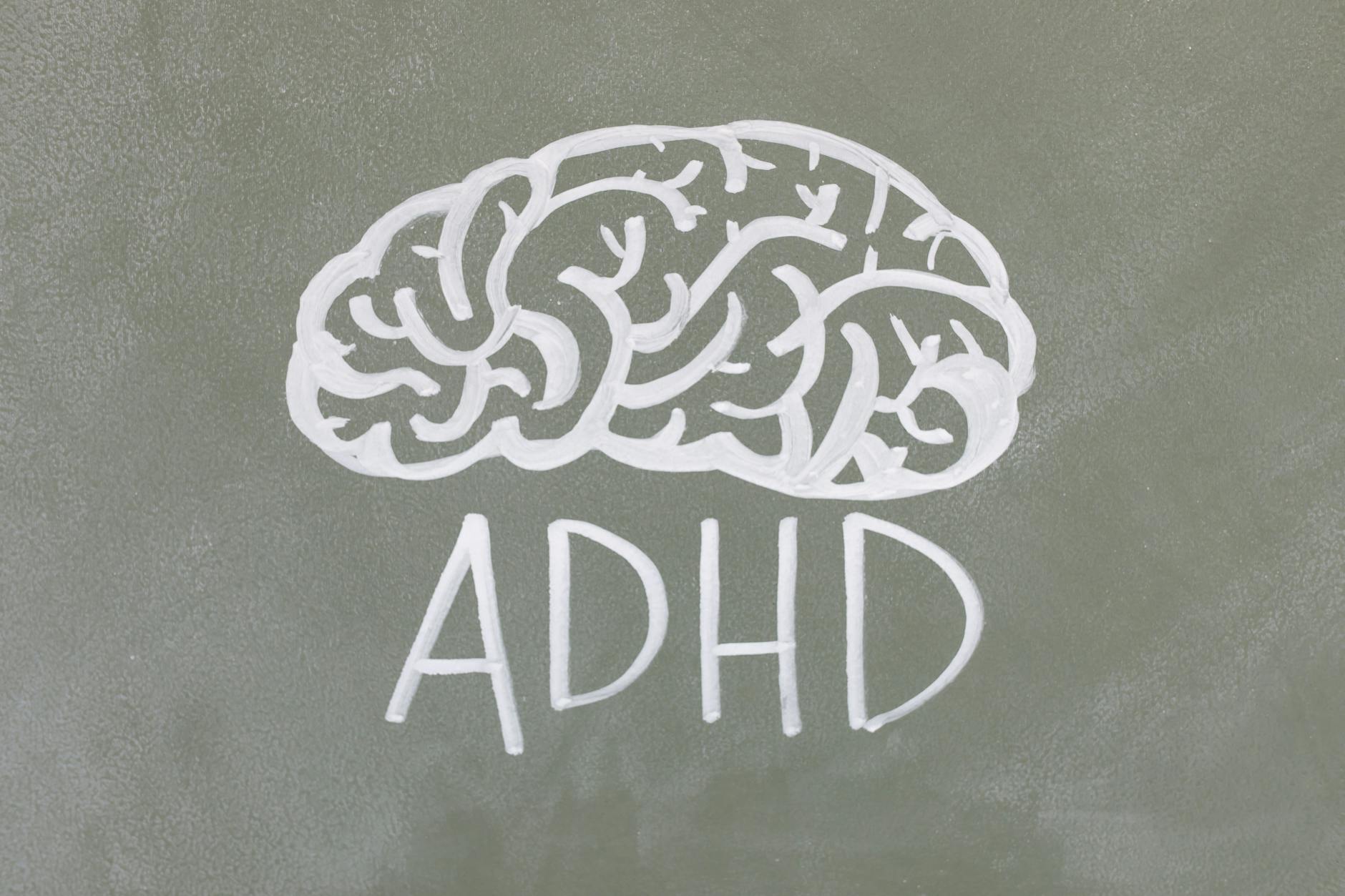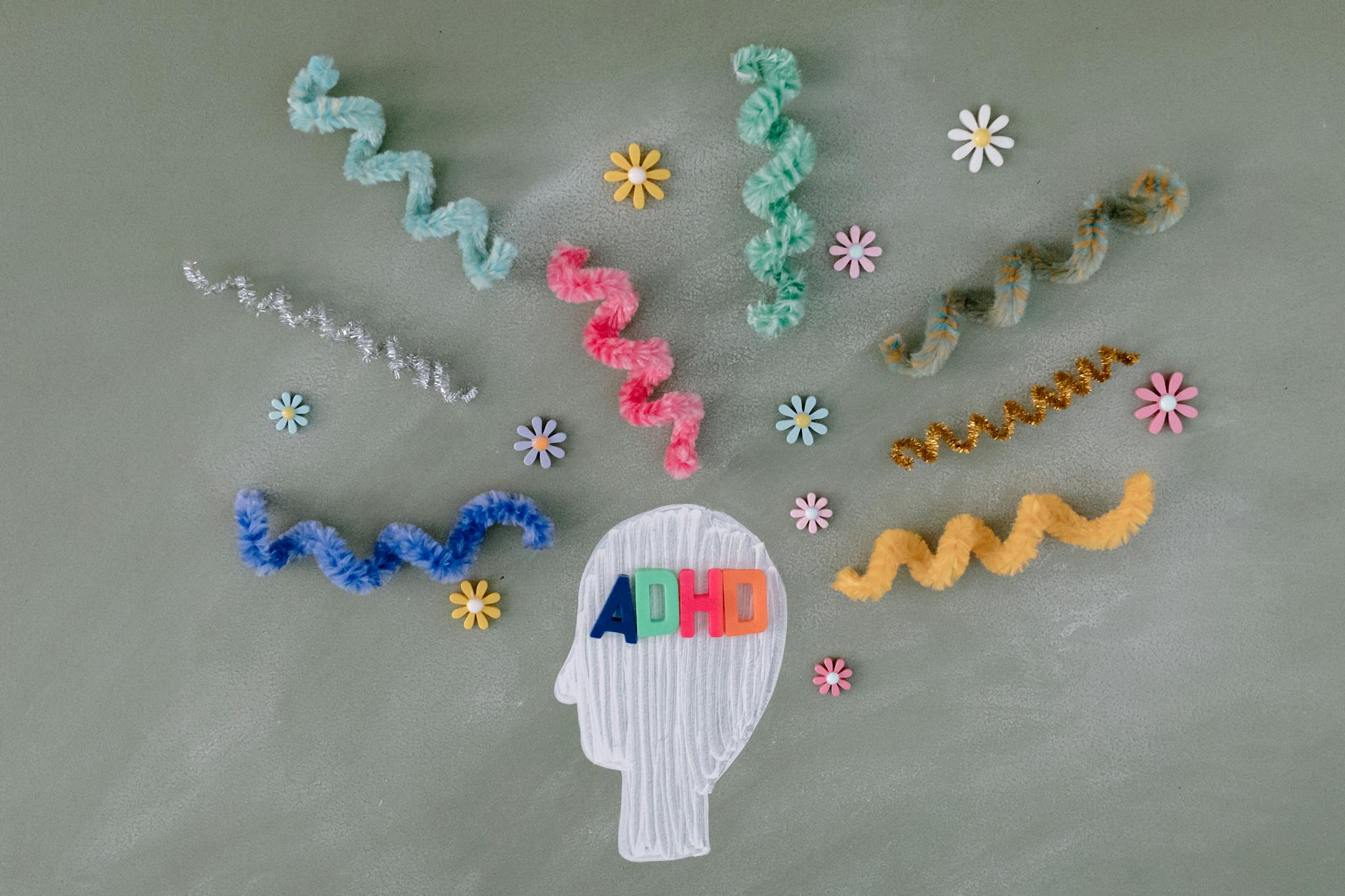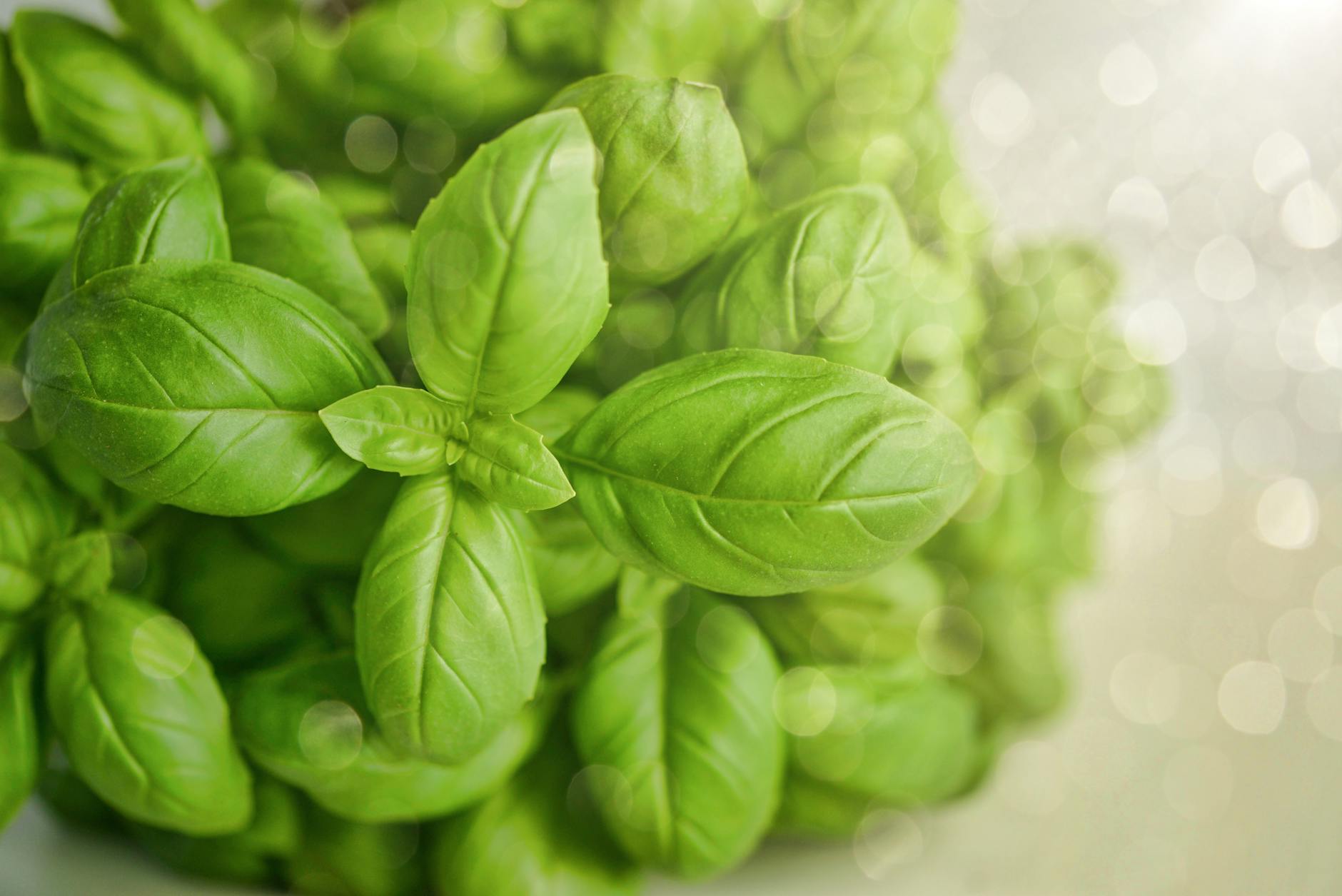
ADHD, what’s that? Do you ever feel like no matter how much effort you put into focusing, your brain just wants to go in a hundred different directions? If you struggle with concentration, keeping on top of tasks, or constantly find yourself feeling restless, you might be dealing with more than just everyday distractions. Adult ADHD could be the reason.
While we tend to associate ADHD with children bouncing off the walls or unable to sit still in a classroom, it doesn’t just disappear when you grow up. In fact, a lot of adults are living with ADHD without realizing it—and it’s often only later in life that they start connecting the dots.
Let’s talk about what ADHD in adults looks like, how it affects daily life, and how both psychological treatment and Ayurvedic practices can offer ways to help you manage it better.

ADHD: It’s More Than Just Forgetting Things
ADHD (Attention-Deficit/Hyperactivity Disorder) is more than just being easily distracted. It’s a neurodevelopmental disorder that affects how the brain controls attention, impulsiveness, and activity levels. These are the parts of the brain that help us focus, plan, and stick to things until they’re done. But for someone with ADHD, those functions don’t always work as smoothly as they should.
As an adult, you might notice that:
- You lose focus easily, even during important tasks.
- You start things but rarely get around to finishing them.
- You can’t keep track of appointments or deadlines, even if you’re trying your best.
- You often act impulsively—whether it’s making a quick decision without thinking it through or interrupting others during conversations.
- You feel restless, always moving from one thing to the next, and rarely feel like you can fully relax.
- Your emotions can swing from frustration to overwhelm, especially when life feels out of control.
These are just a few of the symptoms adults with ADHD experience on a daily basis. It can affect your work, relationships, and overall sense of well-being. And since these symptoms can sometimes be subtle, many people don’t realize ADHD is at the root of their struggles, thinking they’re just not organized or motivated enough.
Diagnosing Adult ADHD: DSM-5 Criteria

For a diagnosis, psychologists or psychiatrists refer to the DSM-5 (the official manual for diagnosing mental health conditions). According to the DSM-5, there are three types of ADHD:
- Predominantly Inattentive: Difficulty with focus, forgetfulness, and disorganization.
- Predominantly Hyperactive-Impulsive: Restlessness, impulsivity, and difficulty sitting still.
- Combined: A mix of both inattentiveness and hyperactivity.
To receive an ADHD diagnosis, these symptoms must have been present since childhood, even if they weren’t recognized back then. And, they need to show up in multiple areas of your life—like at work and at home—making everyday functioning more difficult.
The Brain Chemistry Behind ADHD
ADHD isn’t just about behavior—it’s about how the brain works. People with ADHD have lower levels of dopamine and norepinephrine, the neurotransmitters responsible for things like attention, focus, and self-control. This is why staying on track or being patient in situations can be much harder for those with ADHD.
It’s also why tasks that are boring or repetitive can be nearly impossible to focus on, while something exciting or stimulating can grab your attention right away. It’s not about laziness or lack of interest—it’s how the brain is wired.
Ayurveda’s Take
From an Ayurvedic perspective, ADHD is primarily linked to an imbalance in the Vata dosha, which governs movement, communication, and the nervous system. When Vata is out of balance, the mind becomes restless, scattered, and unfocused—classic symptoms of ADHD.
In some cases, Pitta dosha, which controls focus, determination, and emotional regulation, can also be involved, especially if the individual feels frustrated, irritable, or overly driven. Ayurveda looks at ADHD as a Prana Vayuimbalance (a sub-dosha of Vata responsible for mental activity), where the natural flow of energy in the mind is disrupted.

Managing ADHD with Psychology
Luckily, there are strategies that help manage adult ADHD and make life a little easier. Here are a few proven psychological approaches:
- Cognitive Behavioral Therapy (CBT): CBT is one of the most effective therapies for ADHD. It helps you recognize negative thought patterns and change them. For instance, instead of beating yourself up for being disorganized, you learn practical strategies to improve your organization skills and manage your time.
- Set Up Routines: Routines are a lifesaver for people with ADHD. By establishing a daily schedule, you give your brain a little more structure to work with. It doesn’t have to be rigid, but consistency in your day can help reduce distractions.
- Break Tasks Down: Big projects can be overwhelming for anyone, but with ADHD, the sheer size of a task can feel paralyzing. Breaking things down into smaller steps makes it easier to tackle without feeling overwhelmed.
- Executive Function Coaching: Working with an ADHD coach can provide personalized strategies to help with time management, organization, and emotional regulation.

Ayurvedic Management of ADHD
Ayurveda, with its holistic approach, offers several ways to help manage ADHD by calming and nourishing the mind. The focus is on bringing balance to the Vata dosha and supporting the brain’s ability to focus and relax.
- Vata-Pacifying Herbs:
- Ashwagandha: Helps calm the nervous system and supports mental clarity.
- Brahmi: Known for enhancing memory and focus, Brahmi is great for improving mental sharpness.
- Shankhpushpi: A herb that promotes relaxation and mental tranquility.
- Jatamansi: Helps ground the mind and reduce mental agitation.
- Building Ojas: Ojas, in Ayurveda, is the essence of vitality and mental clarity. Boosting Ojas can help improve focus, energy, and emotional resilience. Ways to build Ojas include:
- Getting quality sleep: Stick to a regular sleep schedule to stabilize your energy.
- Nourishing the body with warm, wholesome foods: Foods like sweet potatoes, lentils, and ghee support both body and mind.
- Yoga and Pranayama: Gentle yoga practices, combined with breathing exercises like alternate nostril breathing (Nadi Shobhana), help calm the mind and soothe an overactive nervous system.
Diet for ADHD: Feeding the Brain Right
Diet plays a big role in managing ADHD symptoms. According to Ayurveda, a Vata-pacifying diet helps ground the mind and support better focus. Some dietary tips include:
- Whole grains like oats, quinoa, and brown rice to provide steady energy.
- Root vegetables like carrots, beets, and sweet potatoes, which are grounding.
- Healthy fats like ghee, avocado, and sesame oil to nourish the brain.
- Warming spices like ginger, cinnamon, and turmeric to aid digestion and balance Vata.
Avoiding stimulants like caffeine, sugar, and processed foods is essential, as they can further aggravate Vata and make symptoms worse.
Handling Symptoms Day to Day
Living with ADHD can feel overwhelming, but there are daily strategies to help manage the chaos. Here are a few quick tips to help when you’re feeling scattered:
- Time Blocking: One of the most effective strategies for ADHD is using time blocks to structure your day. This means setting specific times for different tasks and sticking to that schedule. For example, you could spend one hour answering emails, two hours working on a specific project, then take a break. The key is to have set start and end times for everything. This helps with task switching, which can be hard for someone with ADHD.
- Visual Reminders: Using visual aids like sticky notes, colored planners, or task boards can help you remember things and stay organized. Whether it’s a whiteboard near your desk with your daily goals or reminders stuck on your fridge, having visual cues can help reinforce what needs to be done without overwhelming your mind.
- Use the Two-Minute Rule: If something takes less than two minutes to do—like responding to a quick email, filing a paper, or making a short phone call—do it immediately. This prevents smaller tasks from piling up and becoming overwhelming later on. It’s a great way to reduce clutter in both your physical and mental space.
- Body Doubling: This method involves doing tasks alongside another person, whether they’re physically present or joining you via video call. The idea is that having someone around can help you stay on track and feel more accountable. Even if the other person is doing their own thing, their presence can help you focus better on what you’re working on.
- Set Up Reward Systems: Motivation can sometimes be a challenge for people with ADHD, especially when tasks are boring or seem never-ending. Create a reward system to motivate yourself. For example, after completing a task, reward yourself with something you enjoy—a snack, a quick walk, or a break to watch a funny video. It gives your brain something to look forward to.
- Declutter Your Environment: For someone with ADHD, a cluttered environment can create a cluttered mind. Simplify your surroundings by organizing your workspace or home so there are fewer distractions. This could mean cleaning up your desk at the end of each day, limiting the items on your to-do list to just 2-3 major tasks, or even using noise-cancelling headphones to avoid distractions from your environment.
- Limit Multitasking: While multitasking may seem like the only way to get everything done, it’s actually not ideal for people with ADHD. Instead, try single-tasking, focusing on one thing at a time. This helps reduce overwhelm and increases the chances of finishing tasks completely. You can use timers like the Pomodoro Technique (25 minutes of focused work followed by a 5-minute break) to maintain focus while allowing for short mental breaks.
ADHD in adults can impact many aspects of daily life, often making tasks feel overwhelming and creating challenges in relationships and work. Many adults with ADHD experience heightened anxiety as they try to keep up with tasks and responsibilities, often leading to persistent stress. Managing ADHD symptoms can also make sleep elusive, contributing to insomnia and further draining mental energy. Additionally, social anxiety is common, as impulsivity and distractibility can make social interactions feel challenging. Adults with ADHD are also at higher risk for depression, as constant struggles can affect self-esteem and motivation. Forgetfulness and difficulty focusing compound these issues, creating a cycle that can feel hard to break. Understanding and addressing these interconnected challenges can provide a pathway toward better symptom management and overall well-being.
Finding Balance
ADHD in adults is real, and it can affect every aspect of your life. But by combining both modern psychological techniques and Ayurvedic wisdom, it’s possible to find balance and improve focus. Whether it’s through CBT, herbal supplements, or calming routines, managing ADHD is about finding what works for you and building habits that support your brain and body.
Remember, it’s not about “fixing” yourself but learning to live in a way that works with your unique mind. Balance is possible—with the right tools, support, and lifestyle, you can thrive with ADHD.
Follow us on Instagram for daily dose of inspiration and info on self healing and subscribe to our Youtube Channel to keep up with in detailed information explained step by step. Thank you for sticking around.





